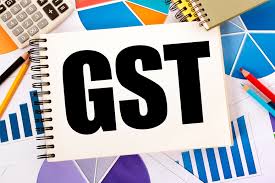Rising e-way bills in July signal GST collections set to increase
Electronic-way bill generation improved sequentially in July, signalling a continued recovery in economic activity and a likely improvement in goods and services tax (GST) collections in August, offering relief to policymakers.
Data issued by the GST Network on Monday showed that daily average e-way bills this month as of 18 July was at 1.97 million, an 8.5% rise from the full-monthly average for June. This is significant as it comes on the higher base of June, which saw a 37% sequential rise in e-way bills at 54.6 million.
The improvement in electronic permits raised for transportation of goods within and across states is expected to reflect in GST receipts of central and state governments in July and August.
The spurt in e-way bill generation in June is a sign of improved consumption during that month and better revenue collections in July.
The same trend seen so far in July implies a further growth in GST receipts in August.
From transactions in May, the Centre and states had collected ₹92,849 crore of GST revenue in June, the first instance of GST receipts dropping below the ₹1-trillion mark since last October.
The uptick in e-way bills seen in June and July underscore a rebound in economic activity.
Experts said that the sequential increase in e-way bills in June was expected because the second wave of the pandemic impacted most operations in May. However, the continued improvement in e-way bill numbers from June to July indicates a steady recovery, said Abhishek Jain, tax partner, EY. “Ideally, these numbers should also correspond to increased GST collections as, broadly speaking, the increase in the number of e-way bills generated indicates enhanced supplies, which means higher GST collections," he said.
In its 15 July bulletin, the Reserve Bank of India (RBI) said that the tapering of the second covid wave and the progress on vaccinations brightened near-term prospects for the economy. For its optimism, the central bank relied on the revival of the monsoon, robust automobile sales, including two-wheelers and tractors, and recovery in electricity generation to pre-pandemic levels.
Besides economic recovery, tax enforcement measures and curbs on input tax credits available to businesses where their suppliers have not complied with tax payments and return filing requirements, too, have aided GST receipts in recent months.
Smita Singh, a partner at law firm Singh and Associates, said GST collections for July are expected to rise with the easing of lockdown restrictions and the gradual economic recovery. “While the increase in e-way bills generated during the month of June may get reflected in the GST collections for July, the rise in collections may not be as much as the rise in generation in e-way bills," said Singh.
Source:https://www.livemint.com/economy/rising-e-way-bill-generation-in-july-signals-continued-economic-recovery-11626685708986.html
Download our App to get knowledge updates::: https://play.google.com/store/apps/details?id=com.app.gstmitra
Join Our Telegram Channel for more updates:https://t.me/praveengst



Comments
Post a Comment